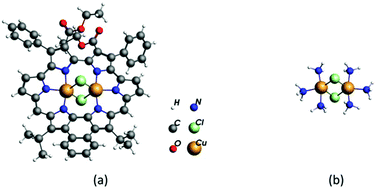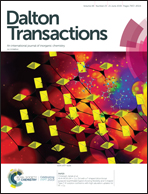Spin-filter transport and magnetic properties in a binuclear Cu(ii) expanded porphyrin based molecular junction
Abstract
Although the magnetic and transport properties of molecular junction systems composed of metalled porphyrins or phthalocyanines have been broadly studied in recent years, to date no studies have been devoted to evaluate the aforementioned properties in junction systems featuring metalled expanded porphyrins as active elements. The present work reports a detailed theoretical study of the magnetic and electronic transport properties of the recently synthesized dinuclear Cu(II)–naphthoisoamethyrin complex (PyCu2). This is the first work on performing these kinds of studies using a magnetically coupled metallic expanded porphyrin as a molecular kernel. DFT and wave function-based methods have been used to determine the nature of the magnetic interaction between the metallic centres, characterized by the exchange coupling constant J, showing that although this was found to be weakly antiferromagnetic, after an exhaustive analysis it turns out that the coupling has a ferromagnetic nature with a value of J = 14.2 cm−1. Once the magnetic ground state of PyCu2 was rigorously established, the spin resolved transport properties of the device composed of the expanded porphyrin attached to two gold nano-wires were studied by means of the combination of DFT and the nonequilibrium Green's function formalism, in order to explore PyCu2 prospects as a possible spintronic device.



 Please wait while we load your content...
Please wait while we load your content...